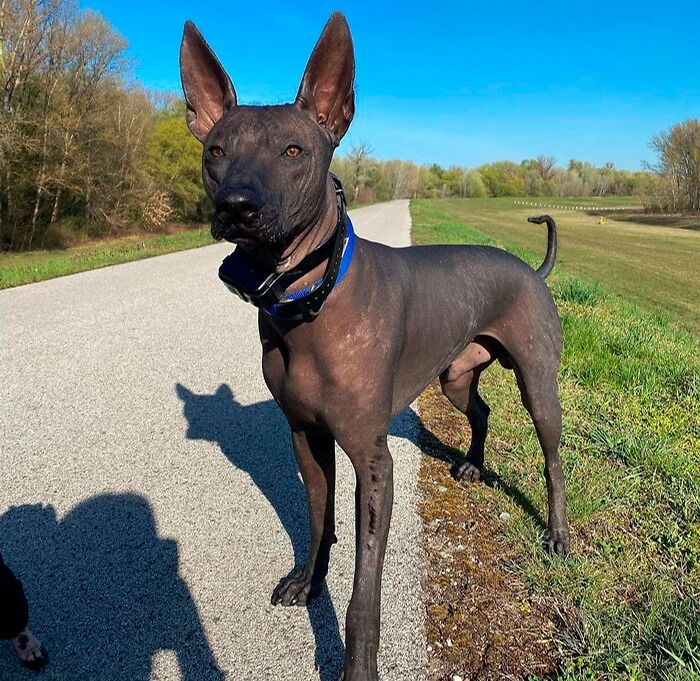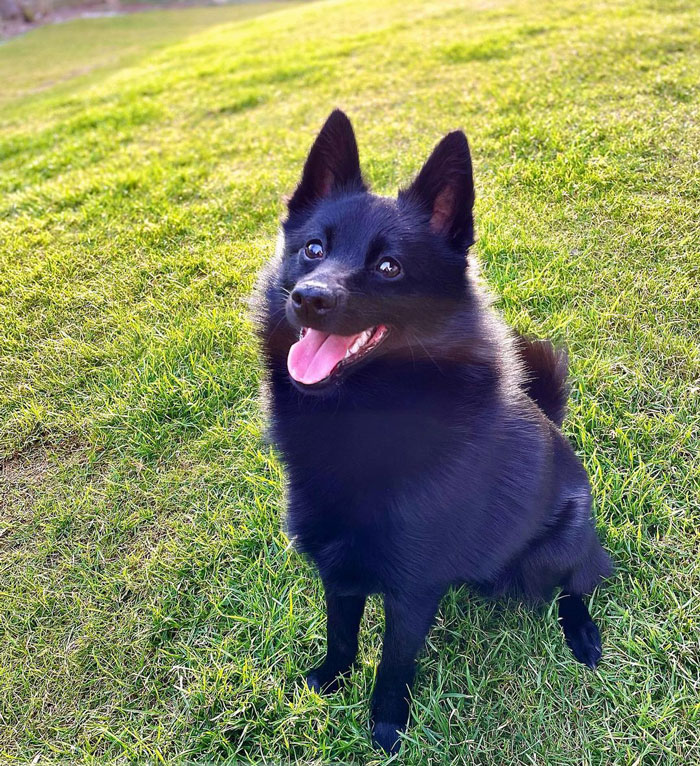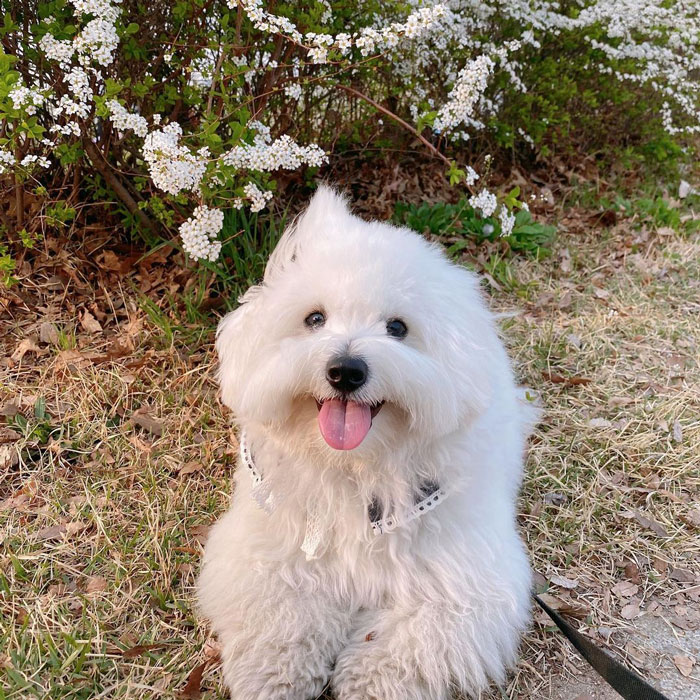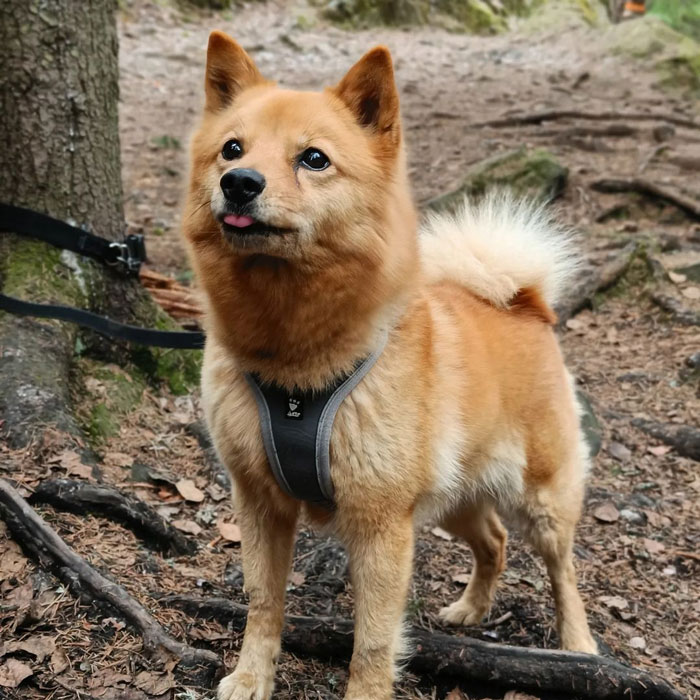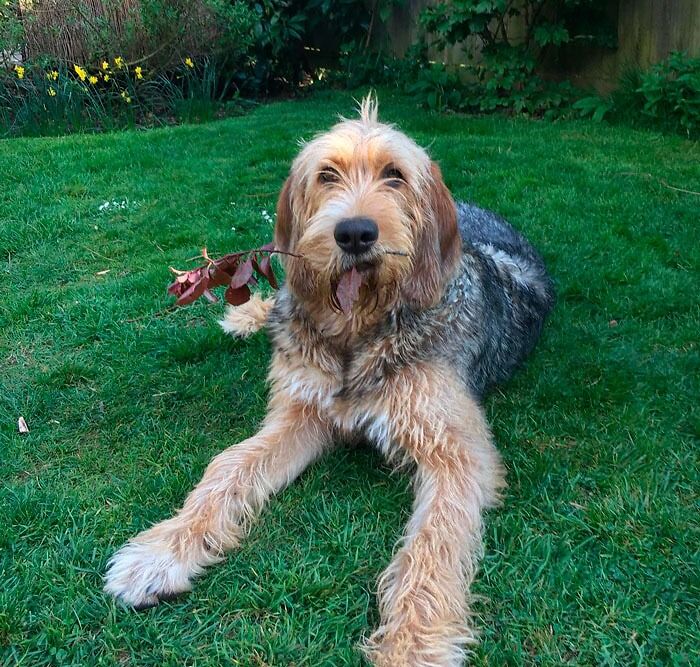Let’s get one thing straight right off the bat: any dog is a cool dog, no matter breed, appearance, or pedigree. Yet, when you walk in the street or in a dog park, you will probably see some breeds much more often than others. While some you recognize instantaneously, other uncommon dog breeds you might be seeing for the first time and not even know their names.
Some of these breeds have been designed intentionally, with a specific purpose in mind, like guarding or herding a flock. But at times, weird dog mixes occur when two very unlikely breeds come together in a love relationship, producing a funny, adorable pup no one has seen before. But then again, if you remember that dogs evolved from wolves, all dogs become weird dogs, or should we say, weird wolves.
For this article, we collected some of the rare dog breeds you don’t see in the dog park every day. How many of these exotic dogs have you met in real life? Share this article with your dog-loving friends, and show us your floofs, no matter how rare or common, in the comments because we always appreciate pics of the coolest dogs, and we know yours is just one cool doggo.
This post may include affiliate links.
Peruvian Inca Orchid Dog
Native to Peru, this dog is one of several hairless breeds. It is officially a part of the country’s cultural heritage. Usually raised as pets, Peruvian Inca Orchid Dogs radiate heat from their bodies and are great to cuddle with and stay warm. Affectionate and intelligent, they are very protective of the women and children of the family.
Pumi
This Hungarian breed is well-known for its funny facial expressions. While they have been bred since the 17th century, official standards were only recorded in 1935. As a breed of sheepdog, they are equally good at gathering, driving, and keeping stock under control. While they may be a little too vocal at times, Pumis are also intelligent and lively.
Estrela Mountain Dog
Not only is the Estrela Mountain Dog a great herd-guarding dog, but it is a formidable opponent to any sort of prey it might face. It doesn’t need to be taught to protect children, as it does so instinctively to all little ones in the family. As the breed is known for its independent mind, it is important to train them from early on.
Xoloitzcuintli
Though the Xoloitzcuintli is one of several hairless dog breeds, sometimes the same litter can include both hairless and coated pups. The name of the breed comes from Xolotl, the Aztec god of fire and lightning. There has been very little selective breeding in Mexico where the Xoloitzcuintli originates from, allowing them to retain their primitive temperament of high intelligence, high energy, and strong social skills.
In the Aztec mythology, those doggos were the ones who guided their owners to Mictlán (the underworld) 😄
Schipperke
Though believed to be bred as a barge dog for the canals of Belgium, the name can be translated both as “little captain” and “little shepherd,” depending on the region. While in the 1880s Schipperkes were seen on barges and small boats, given their lineage that can be traced to a shepherd dog called the Leauvenaar, it is safe to assume that initially they were intended to guard flocks.
Basenji
Basenji originally come from Congo, a country on the African continent. Alongside their distinct appearance, they also have several interesting traits that are not very common among other breeds. For example, Basenjis rarely bark, preferring to make a weird yodeling sound. Another thing is that the females can only reproduce once a year.
Swedish Vallhund
Swedish Vallhunds hail back to the 8th or 9th century when they were bred to herd and drove cows. In 1942, the breed was on the brink of extinction, but careful and patient work combined with publicity brought them back. Short legs help the Swedish Vallhund stay closer to the ground and nip at the ankles of any misbehaving cow. Today it is considered the national dog of Sweden.
Coton De Tulear
Meet the national dog of Madagascar. The Coton de Tulear, named after a city, is more of a cloud than a hunting dog. It has been the companion of Merina, the ruling tribe of Madagascar, for a long time, earning the title of the Royal Dog of Madagascar.
Old English Sheepdog
Remember Prince Eric and his dog Max from The Little Mermaid? Max was an Old English Sheepdog, or, as they are also called, a bobtail. They are very chill and fun to have around. Their old habits are strong though, so an Old English Sheepdog may try to herd children by bumping them gently. But then, you can use that time to go get yourself a cuppa.
Tibetan Mastiff
Called “nomad dog” or “lion dog” in its native Tibet, Tibetan Mastiffs will likely keep all the wrongdoers away from your house based on their sheer size. Raising a Tibetan Mastiff requires some work, as they tend to be intelligent but stubborn. Originally used to protect Buddhist monasteries from large animals, this breed retains its guardian nature.
My bestie just had to put hers down (cancer that they tried so hard to go into remission). He lived a good life and was about 14 years old. She used to keep his "bangs" out of his eyes with a barrette : )
Leonberger
Don’t let the Leonberger’s massive figure fool you. This dog is very agile and is great at search and rescue, especially in water. However, it was primarily bred as a family dog and remains true to its calling. It is safe to leave your little children around them, knowing that they will take great care of them.
My command had a mental health fair one year where one of the therapy dogs that showed up was a Leonberger named Aslan, which is like the best name for a Leonberger ever
Catalburun
Bred in Turkey for hunting game, especially partridge and francolin, the Catalburun is one of only three dog breeds that have a distinct split nose. With only a few hundred specimens existing today, this breed is considered to be very rare. Thanks to their acute sense of smell, Catalburuns have recently been trained to serve as detection dogs for drugs, explosives, and search and rescue.
Nederlandse Kooikerhondje
Kooikerhondje translates from Dutch as “duck catcher’s small dog” and describes this breed’s main occupation. Belonging to the spaniel family, these dogs are cheerful, well-behaved, friendly, and alert. They take time to warm up to someone but stay loyal for the rest of their lives.
Bergamasco Sheepdog
If you want to work with sheep, you have to look like a sheep. The Bergamasco Sheepdog mastered this look with excellence. They originated in the Italian part of the Alps where they were used as herding dogs. Every part of their body is covered with long fur to help them stay protected in bad weather.
Cane Corso
If you have ever walked down the street with a Cane Corso on a leash, you’ve probably noticed how people tend to part in front of you to make way for this gorgeous giant. While being great guardians, they are very affectionate to their own humans.
A friend of mine had one. This huge dog wanted to play with every human larynx. I was lucky and bribed him with a WHOLE liverwurst. This breed has incredible muscular power. If the fur giant nudged me just slightly, I was sure to get a new bruise. This was no dog, rather a steam engine! I miss him...
Pharaoh Hound
The native Maltese name of this breed is Kelb tal-Fenek, which translates as “rabbit dog.” Its English name refers to the dog’s appearance, which resembles the dogs found in Ancient Egyptian paintings. It is also said that the breed takes its roots from Egypt; however, the Pharaoh Hound is a fairly modern dog, traditional for rural Malta.
Catahoula Leopard Dog
The state of Louisiana also has its official dog, and it is called the Catahoula Leopard Dog. Most of them come with leopard-like spots of various colors, though solid coats are also possible. While initially bred to be hunters, Catahoula Leopard Dogs are also great herders and search and rescue dogs.
My younger dog is a quarter Catahoula, a quarter Carolina (aka American Dingo), and half Husky. She has the Catahoula leopard patterned coat, but pale tan like the Carolina. She has the Husky's blue eyes and large upright ears. And she has the widest variety of vocalizations I've ever heard. She barks, 'talks', whines, and howls.
Finnish Spitz
Though originally designed as a hunting dog that can go after any prey, from grouse to elk and sometimes even bear, a Finnish Spitz is also a great house pet that bonds with family members well. In Finland, where it is still often used for hunting, the Finnish Spitz has been recognized as the national dog since 1979.
Beauceron
A Beauceron is a versatile employee, as it can work as a guard and herder for sheep and cattle, protecting them against wolves. During wars, they also served as messengers, land mine detectors, and supply transport dogs, while in peaceful times Beaucerons are often employed as police or rescue dogs.
Saluki
Coming from the Middle Eastern region, Salukis have short fur, except for their long ears that are completely covered with hair. Their long legs and snouts make the breed a great hunter. Salukis belong to the sighthound category, among other dogs who hunt by sight rather than by scent.
reportedly, they'll perch on the back of a camel while they're waiting on something to chase down....
Thai Ridgeback
The Thai Ridgeback is one of only three dog breeds that have a ridge of fur on their back that grows in the opposite direction than the rest of the hair. While very intelligent and loyal, their independent character makes them a better match for owners who have substantial experience with dogs.
Stabyhoun
The Stabyhoun is one of the rarest dog breeds in the world that originates from the Netherlands. While in its native province of Friesland, this breed of farm dog has been mentioned in literature since the early 1800s, it was only in the 1960s that they became known outside the province, and they only left the Netherlands in the 2000s.
Grand Basset Griffon Vendeen
You have to be exceptional at your job to become a recurring hero of your nation’s folklore. Grand Basset Griffon Vendeens are well-known for their stamina and bravery. Their comparatively small size and short legs make them great hare hunters. As pack dogs, they require either a lot of time with their human or another dog or cat as a companion.
Russian Toy
The Russian Toy survived almost complete extinction twice, once in the 1920s and later in the 1990s. It was introduced to the international community only after the 1990s. As they were bred to fight rats and be watchdogs, Russian Toys are pretty vocal to this day. They become attached to their family despite the age of the members.
Otterhound
Since Otterhounds were originally bred to hunt otters, they perform very well both on land and in the water. They even have webbed feet, which is a very unusual trait for dogs. They are usually very friendly towards their humans and have a unique bass voice.
Canaan Dog
Say hi to Israel’s national dog. For ages, bedouins of the Middle East used them for guarding their camps and herds. The breed carried this trait through the centuries and remains a very agile and defensive protector of their home and family, though never really aggressive. They are very close with their people but prefer to keep their distance with strangers.
Dandie Dinmont Terrier
Dandie Dinmont Terriers have a long body, short legs, and a distinctive hairdo. Friendly and chill, they make great companions for older children. The name of the breed is rumored to have originated from a character in Sir Walter Scott’s novel Guy Mannering.
Skye Terrier
Twice as long as it is short, the Skye Terrier is said to have originated from the Isle of Skye in Great Britain, hence the name. While they enjoy daily walks and come from a hunting background, Skye Terriers prefer to live indoors. They are said to be an endangered breed, as not many of them are born each year.
Norwegian Lundehund
The name “Lundehund” consists of two Norwegian words: “lunde,” i.e. puffin, and “hund,” i.e. “dog.” This breed was designed to hunt puffins and their eggs. As these birds are known to make nests in inaccessible places on cliffs, the Norwegian Lundehund has six toes on each paw to help them climb and cling to the cliffs.
Schapendoes
I really appreciate that this list had a description for each and every breed listed 😄 I've been disappointed in the past with BP lists that start out strong, then have no details or description for the last half or 3/4 of the list. So, well done this time!!! The follow through is Much appreciated! 😄
Old english Sheepdog are kinda well known its just the intense grooming discourage many people
I beg all of you to look up the Vietnamese hmong dog. It's like a cat and a dog in one.
the hmong puppies that flood social media might look a bit like a cat/dog mix, but hey are a wolf cross breed. look a bit further than the first picture that google spits out
Load More Replies...I really appreciate that this list had a description for each and every breed listed 😄 I've been disappointed in the past with BP lists that start out strong, then have no details or description for the last half or 3/4 of the list. So, well done this time!!! The follow through is Much appreciated! 😄
Old english Sheepdog are kinda well known its just the intense grooming discourage many people
I beg all of you to look up the Vietnamese hmong dog. It's like a cat and a dog in one.
the hmong puppies that flood social media might look a bit like a cat/dog mix, but hey are a wolf cross breed. look a bit further than the first picture that google spits out
Load More Replies...
 Dark Mode
Dark Mode 

 No fees, cancel anytime
No fees, cancel anytime 




